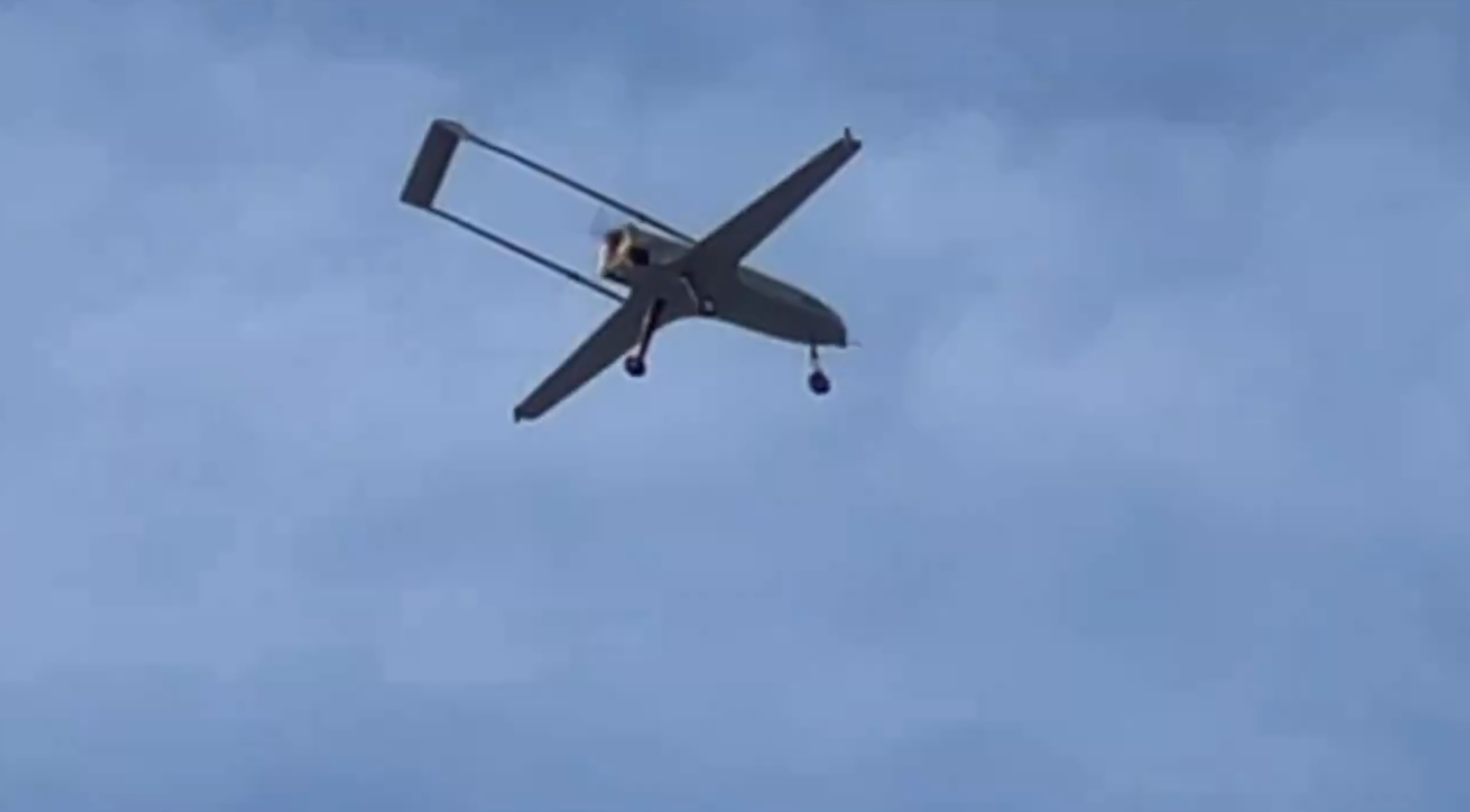


The facility, the Izhevsk Electromechanical Plant “Kupol”, is a key producer of air defence systems including the Tor and Osa surface-to-air missile systems, as well as reconnaissance and strike UAVs such as the Harpia.
The strike occurred during daylight hours on 1 July and triggered multiple explosions and a large fire. Video footage circulating on Russian Telegram channels, including Astra and Baza, shows at least one explosion on the plant’s territory and thick plumes of smoke rising above the area. Kupol is located approximately 1,330 kilometres from the Ukrainian border. Given the likely need for a secure launch zone, Ukrainian drones would have had to traverse a distance of over 1,400 kilometres to reach the target.
The attack was reportedly carried out using upgraded versions of Ukraine’s Liutyi (“Fierce”) loitering munitions. These kamikaze drones have recently undergone technical modifications aimed at increasing their range, payload capacity, and radar evasion capabilities. Notably, the Liutyi drones used in the Izhevsk strike appear to be launched from stationary catapults or mobile platforms rather than road-based systems, according to video footage published on Russian platforms. This design change includes the removal of landing gear, resulting in a more aerodynamic profile.
These adaptations are believed to reduce fuel consumption and improve flight endurance, while simultaneously decreasing the drone’s radar cross-section. The streamlined shape may also increase its flight speed. These enhancements suggest a growing emphasis on deep-strike capability within Ukraine’s drone development programmes.
Aleksandr Brechalov, head of the Udmurt Republic, confirmed the drone strike without initially naming the site. He later acknowledged that there were fatalities and serious injuries at the facility. Emergency services were deployed to suppress fires and conduct search operations amid the debris.
Casualty reports vary. Astra reported that nine people were injured, while Baza stated that three had died and at least 24 were wounded, seven of them critically. These figures have not been independently confirmed.
The Kupol plant has long been a significant asset in Russia’s defence production sector. According to Ukrainian military intelligence, the facility develops and manufactures short-range air defence systems, including the Tor-M2, and a number of unmanned aerial platforms such as Harpia and Granat-01, used by Russian forces in Ukraine.
Geolocation analysis by Astra appears to confirm that the Kupol plant was the target. Footage reviewed by open-source analysts shows a characteristic tall chimney near a body of water, corresponding with known features of the plant’s territory.
In the wake of the strike, temporary flight restrictions were imposed at Izhevsk Airport. It is unclear whether the restrictions were precautionary or the result of drone activity near the airfield.
The incident forms part of a broader escalation in Ukraine’s use of long-range drones to strike targets deep inside Russian territory. In the early hours of 1 July, residents of Saratov and Engels reported hearing explosions. Authorities in Rostov Oblast claimed to have repelled further drone attacks, and four airports across southern Russia temporarily suspended operations.
The Russian Ministry of Defence later claimed that 60 Ukrainian UAVs had been intercepted overnight across six regions of the Russian Federation, including the annexed territory of Crimea, as well as over the Black and Azov seas. These claims have not been independently substantiated.
Kupol was previously struck in November 2024 in an incident that Russian officials did not acknowledge in detail at the time. The latest attack marks the most significant confirmed strike against the facility to date.
The continued modernisation of Ukrainian loitering munitions, including the Liutyi and Bober drones, reflects a broader strategy aimed at degrading Russian air defence and radar systems through precision strikes at strategic depth. The Ukrainian Ministry of Defence recently released footage of Bober drones being used against radar systems in occupied Crimea, indicating an expanding range of capabilities within Ukraine’s UAV arsenal.